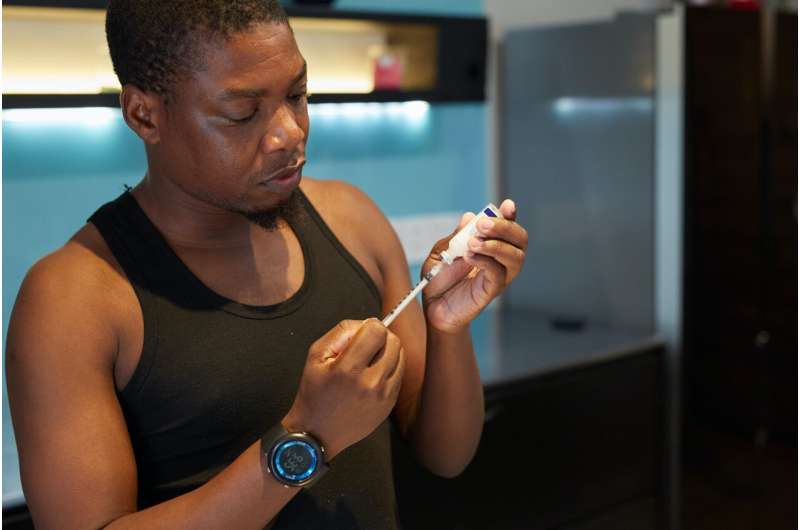
Credit: Unsplash/CC0 Public Domain
While diabetes patients are categorized into two groups, either type 1 or type 2, no two patients are the same. The simple categorization often does not portray the disease and its many presentations, especially within different populations. For this reason, diabetes researchers and clinicians have emphasized the importance of increasing the understanding of diabetes subtypes.
Researchers at the University of Alabama at Birmingham have conducted a cluster analysis of diabetes in the Deep South to understand how the disease, and its subtypes, are clustered among the diverse population. Results published in the Journal of Clinical Endocrinology and Metabolism showed that Black/African American individuals have an increased risk for severe insulin-deficient diabetes, a subtype of type 2 diabetes.
Those with SIDD typically are diagnosed at a younger age, are leaner and have worse blood sugar control, leading to higher A1c. Their beta cell function is impaired, making it harder to produce insulin, and they have a higher risk for complications such as a heart attack.
“Understanding that Black/African American individuals have an increased risk for SIDD has practical implications as it can help guide clinicians to more appropriate treatments for these individuals and hopefully improve outcomes, reduce complications and cut health care expenditures,” said Anath Shalev, M.D., the Nancy R. and Eugene C. Gwaltney Family Endowed Chair in Juvenile Diabetes Research in the UAB Division of Endocrinology, Diabetes and Metabolism in the Department of Medicine and the director of the UAB Comprehensive Diabetes Center.
Recent studies have defined new subgroups of adult-onset diabetes and their associations with disease progression and complications. However, the studies were focused primarily on Northern European or North American white/Caucasian populations.
The multidisciplinary team from the UAB Comprehensive Diabetes Center, the Hugh Kaul Precision Medicine Institute, and Division of Endocrinology, Diabetes and Metabolism wanted to determine whether similar clustering as in previous studies could be applied to diverse cohorts. They studied data from 89,875 patients with diabetes in the Deep South over a 10-year period.
“UAB is uniquely located in a region where the prevalence of diabetes is much higher than other areas of the United States and consists of a more diverse population,” said Brian Lu, Ph.D., first author and researcher in the UAB Comprehensive Diabetes Center. “Our study shows that racial background strongly influences diabetes subtype distribution.”
Results add to the growing literature and push for more research to define and better understand diabetes subtypes. The findings are an example of precision diabetes that can be used in practical, clinical settings.
“The more that we know about an individual’s risks and specific subtype of diabetes, the more personalized we can make their care,” said Matt Might, Ph.D., director of the Hugh Kaul Precision Medicine Institute. “This is another exciting discovery in precision diabetes.”
More information:
Brian Lu et al, Data-driven Cluster Analysis Reveals Increased Risk for Severe Insulin-deficient Diabetes in Black/African Americans, The Journal of Clinical Endocrinology & Metabolism (2024). DOI: 10.1210/clinem/dgae516
Citation:
Study: Black/African American individuals have an increased risk for severe insulin-deficient diabetes (2024, September 4)
retrieved 12 September 2024
from https://medicalxpress.com/news/2024-09-blackafrican-american-individuals-severe-insulin.html
This document is subject to copyright. Apart from any fair dealing for the purpose of private study or research, no
part may be reproduced without the written permission. The content is provided for information purposes only.
Note: This article have been indexed to our site. We do not claim legitimacy, ownership or copyright of any of the content above. To see the article at original source Click Here













